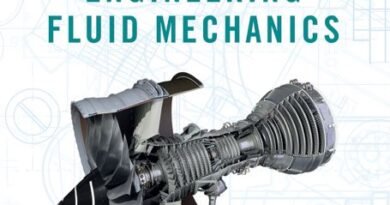Mechatronics System Design
Mechatronics System Design
Pages:

Contents:
Chapter 1 provides an in-depth discussion of the key issues in the mechatronics design process
and examines emerging trends.
In addition, this chapter addresses recent advances of mechatronics
in smart manufacturing and discusses the improvements to conventional designs by using a mechatronics approach
Chapter 2 is devoted entirely to system modeling and simulation. Students will learn to create
accurate computer-based dynamic models from illustrations and other information using the
modified analogy approach.
The procedure for converting a transfer function to a block diagram
model is presented in this section as a six-step process. This unique method combines the standard
analogy approach to modeling with block diagrams, the major difference being the ability to
incorporate nonlinearities directly without bringing in linearization.
Chapter 2 addresses a variety
of physical systems often found in mechatronics. Such systems include mechanical, electrical,
thermal, fluid, and hydraulic components. Models and techniques developed in this chapter are used
in subsequent chapters in the chronology of the mechatronics design process.
Chapter 3 presents the basic theoretical concepts of sensors and transducers. The topics include
instrumentation principles, analog and digital sensors, sensors for position, force, and vibration, and
sensors for temperature, flow, and range.
Chapter 4 discusses several types of actuating devices, including DC motors, stepper motors,
fluid power devices and piezoelectric actuators.
Chapter 5 looks at system control and logic methods. This includes fundamental aspects of digital techniques, digital theory such as Boolean logic, analog and digital electronics, and programmable logic controllers.
Chapter 6 presents controls and their design for use in mechatronics systems. Special attention is
paid to real-world constraints, including time delays and nonlinearities. The Root Locus and Bode
Plot design methods are discussed in detail, along with several design procedures for common control structures, including PI, PD, PID, lag, lead, and pure gain.
Chapter 7 discusses the theoretical and practical aspects of real-time data acquisition. Signal processing and data interpretation are handled using the visual programming approach. Several examples using LabVIEW and VisSim are presented. A case study involving pulse width modulation of
a PI controller output of the PM DC Gear Motor Position Control System is also presented.
Chapter 8 presents a collection of case studies suitable for laboratory investigations. All case studies are implemented using a general purpose I/O board, visual simulation environment, and application software. The key aspect of the graphical environments is that the visual representation of
system partitioning and interaction lends itself to mechatronics applications.




https://www.mediafire.com/file/zdzyretwckrkqi5/mechatronics-system-design-second-edition-si-edition-pdf.pdf/file